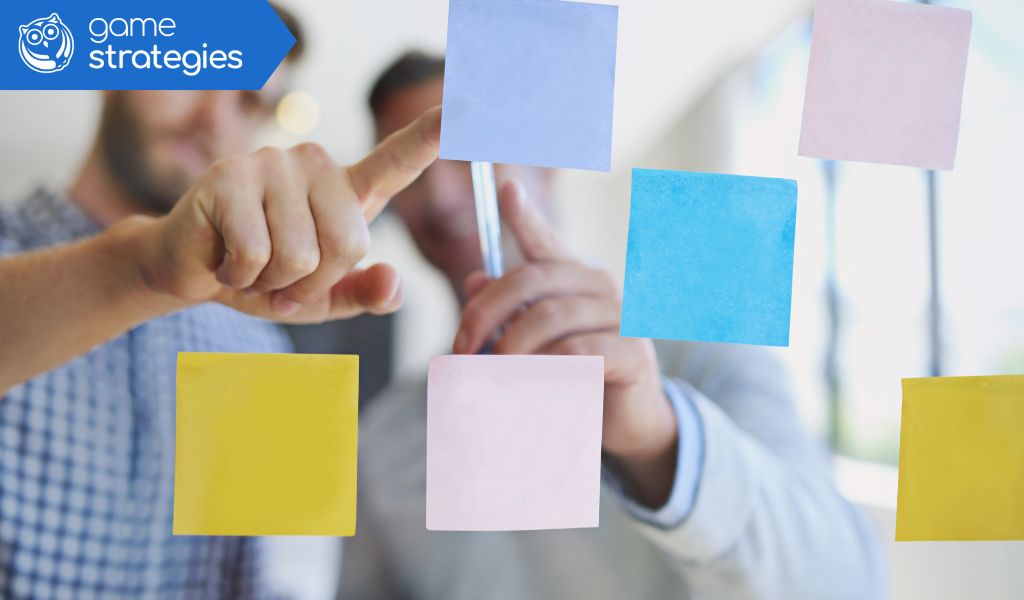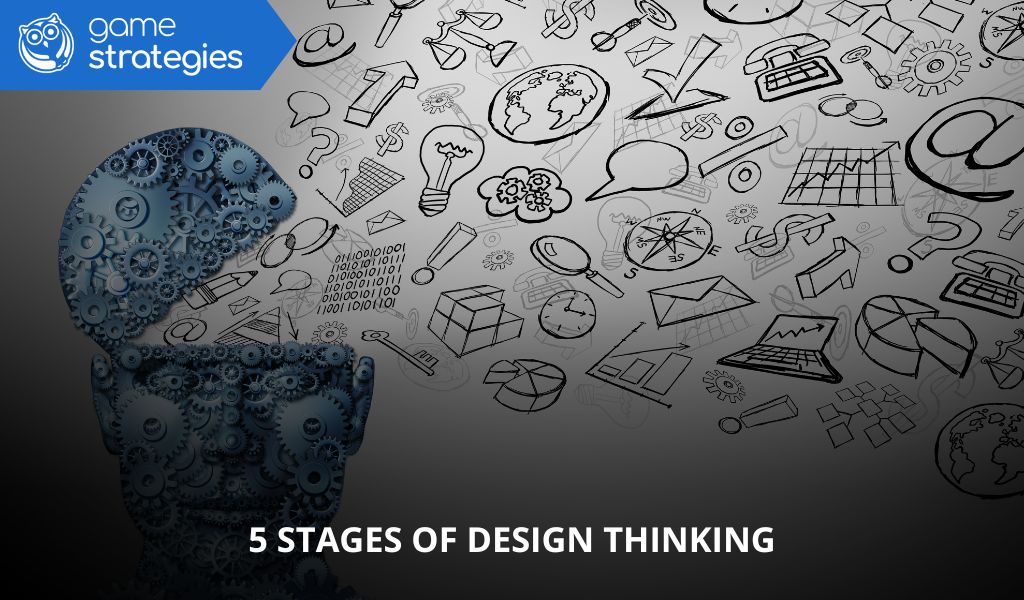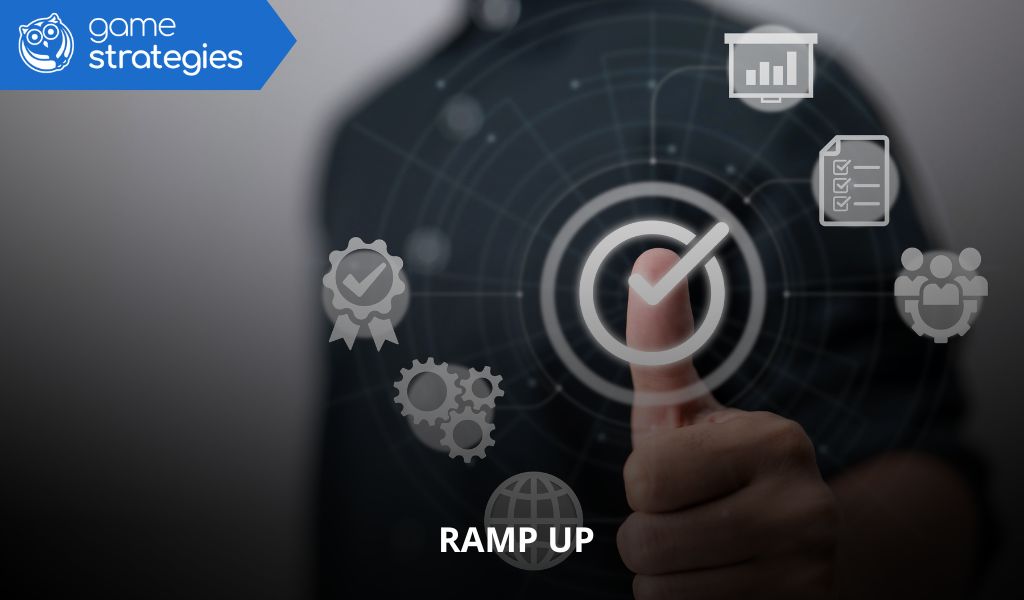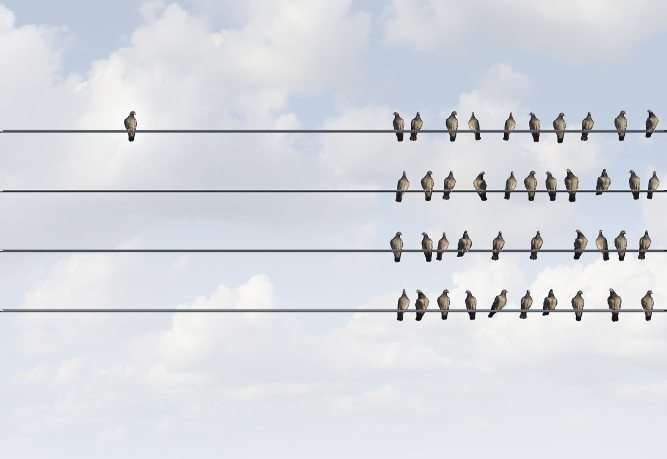In a fast-moving business landscape, innovation has become a necessity rather than a choice. Methods that encourage empathy, creativity and teamwork are booming, and the 5 stages of design thinking stand out as one of the most powerful approaches. This mindset lets you create learner-centred solutions tailored to real challenges and measurable outcomes. At GameStrategies we apply the five stages to develop simulators, onboarding programmes and gamified experiences that transform how companies learn.
What is design thinking and how do the 5 stages apply to corporate training?
From innovation to learning: the value of design thinking
Design thinking begins with empathy. Understanding learners—be they employees, leaders or partners—is the first step towards relevant training experiences. The approach goes beyond delivering content, proposing activities that connect with people both emotionally and intellectually.
Why the 5 stages of design thinking fit training challenges
Unlike traditional methods, the design thinking cycle brings flexibility, dynamism and collaboration. Its iterative structure allows programmes to adapt to varied profiles, specific needs and strategic objectives—ideal for soft-skill development, leadership or internal transformation.
What benefits do the 5 stages of design thinking bring to business?
Greater engagement, creativity and impact
When employees help create learning solutions, commitment soars. Placing their needs at the centre makes learning more meaningful and enduring.
Soft skills, leadership and problem solving: the perfect trio
Design thinking fosters crucial abilities—communication, empathy, critical thinking, leadership. Through simulations and practical activities, staff learn to solve real problems with a strategic yet human focus.
The 5 stages of design thinking explained for learning solutions

1. Empathise with learners: know your team before you train
Start by deeply understanding your audience through interviews, surveys, observation or workshops. Build empathy maps that inform every later decision.
2. Define the real problem: beyond “more training needed”
Transform your insights into a single, user-centred challenge. Avoid generic fixes and focus on what the team truly requires, whether it is better communication, stronger technical skills or smoother change management.
3. Ideate creative solutions through participation
With the challenge clear, unleash creativity. Use brainstorming, SCAMPER or mind-mapping to generate plentiful ideas without judgement. Involving employees here yields solutions rooted in real experience.
4. Prototype content: test before you scale
Produce a simplified version—a pilot module, short simulation or interactive activity. Prototyping validates the concept, surfaces improvements and limits cost and risk.
5. Test and improve: treat learning as a living product
Gather data after launch via surveys, interviews or usage stats. Identify strengths and gaps, then feed insights back into the next iteration.
How to apply the 5 stages of design thinking to simulators and gamified experiences
Empathy maps to build realistic user profiles
Discover what motivates and frustrates learners, then create archetypes that steer every design choice.
Mind maps to structure simulation modules
Visualise the learning journey, split content into levels or phases and plan progression coherently.
Sketches, wireframes and prototypes for gamified environments
Draft different game mechanics, decision paths and reward systems to ensure smooth interaction and effective learning.
Presentations and infographics to visualise learning paths
Clear visuals explain the simulator’s structure, benefits and expected impact—crucial for winning support from leadership and trainers.
Real cases: how we use the 5 stages of design thinking at GameStrategies
Gamified onboarding for a global tech company
We designed an immersive mission-based journey for new hires. Following the five stages yielded a 30 % increase in knowledge retention.
Conflict-resolution simulator using an iterative approach
A firm facing inter-departmental friction needed better communication. Our full design thinking process produced a simulator for practising difficult conversations, immediately boosting cohesion.
Commercial skills development through agile prototyping
A service company required negotiation training for its sales force. After several prototypes and user tests, the final simulator raised sales by 17 % in three months.
Ready to use the 5 stages of design thinking to transform your corporate training? GameStrategies.io designs simulators, gamified routes and bespoke experiences so your team learns practically, stays motivated and achieves real impact.
¿De cuánta utilidad te ha parecido este contenido?
¡Haz clic en una estrella para puntuarlo!
Promedio de puntuación 0 / 5. Recuento de votos: 0
Hasta ahora, ¡no hay votos!. Sé el primero en puntuar este contenido.









